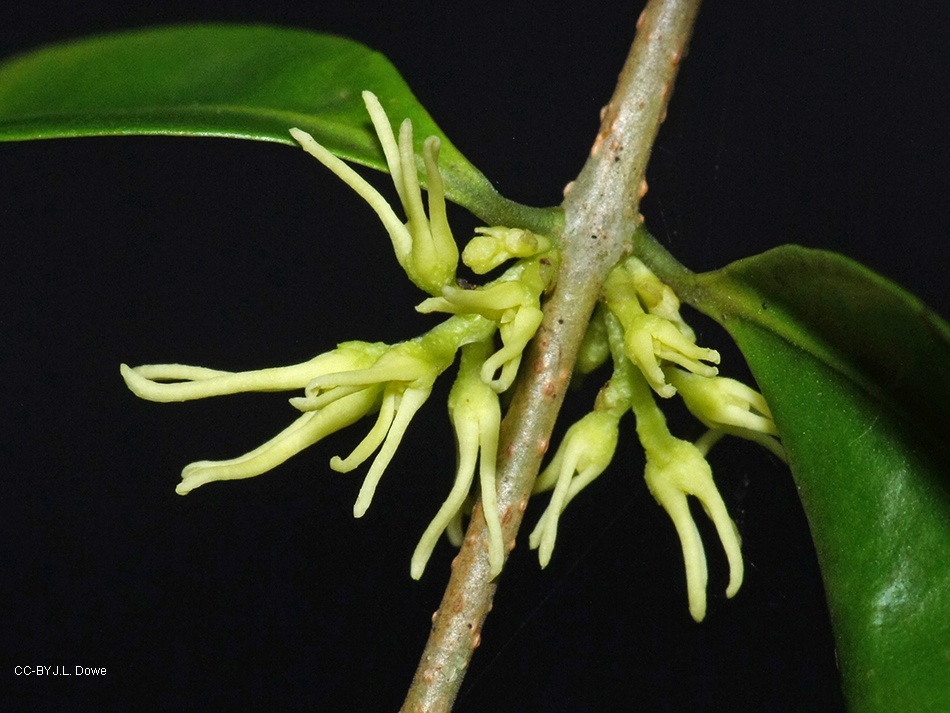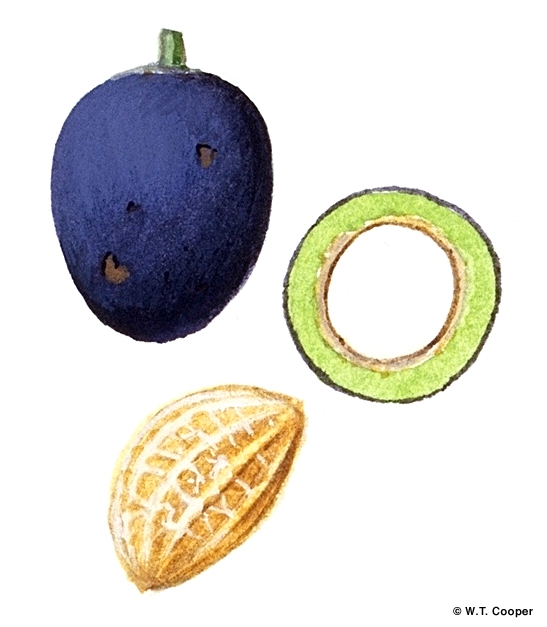Australian Tropical Rainforest Plants - Online edition
Chionanthus acuminiger F.Muell.
Click/tap on images to enlarge

Flowers. CC-BY J.L. Dowe

Fruit, side view, cross section and seed. © W. T. Cooper

Scale bar 10mm. © CSIRO

10th leaf stage. © CSIRO

Cotyledon stage, hypogeal germination. © CSIRO
Family
Mueller, F.J.H. von (1873), Fragmenta Phytographiae Australiae 8(60): 42-43. Type: "Ad sinum Rockinghami; J. Dallachy."
Common name
Olive, Pimply; Pimply Olive
Stem
Leaves
Flowers
Seedlings
Distribution and Ecology
Occurs in NEQ. Altitudinal range from 180-1200 m. Grows as an understory tree in well developed rain forest. Most frequently found in upland and mountain areas.
Natural History & Notes
Fallen fruit eaten by Cassowaries. Cooper & Cooper (1994).
This taxon was treated as 'Chionanthus axillaris' in previous versions of the RFK.
RFK Code
241
Copyright © CSIRO 2020, all rights reserved.

Web edition hosted at https://apps.lucidcentral.org/rainforest




